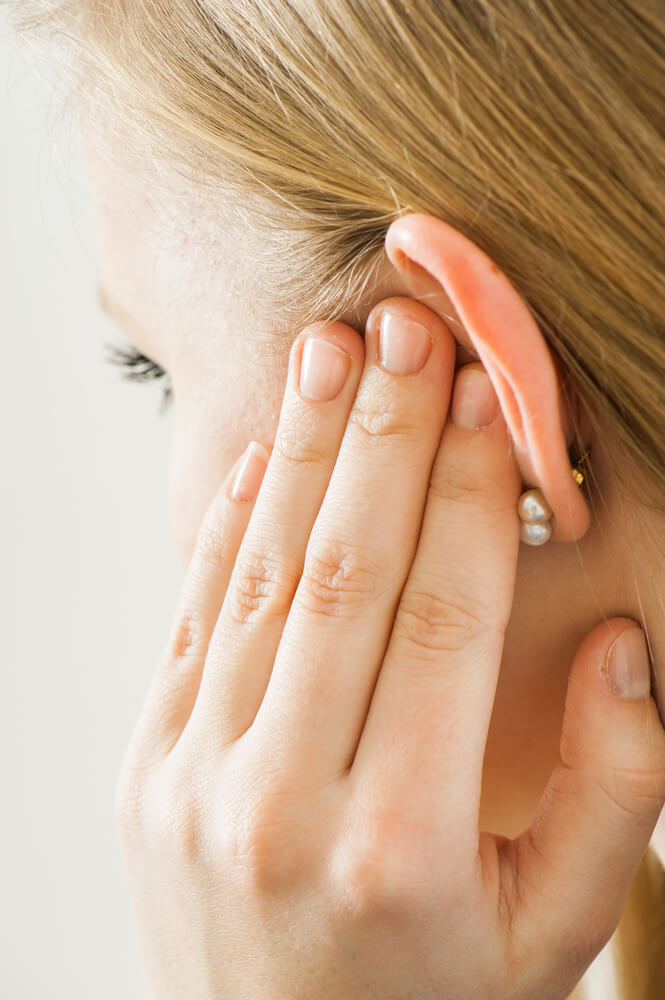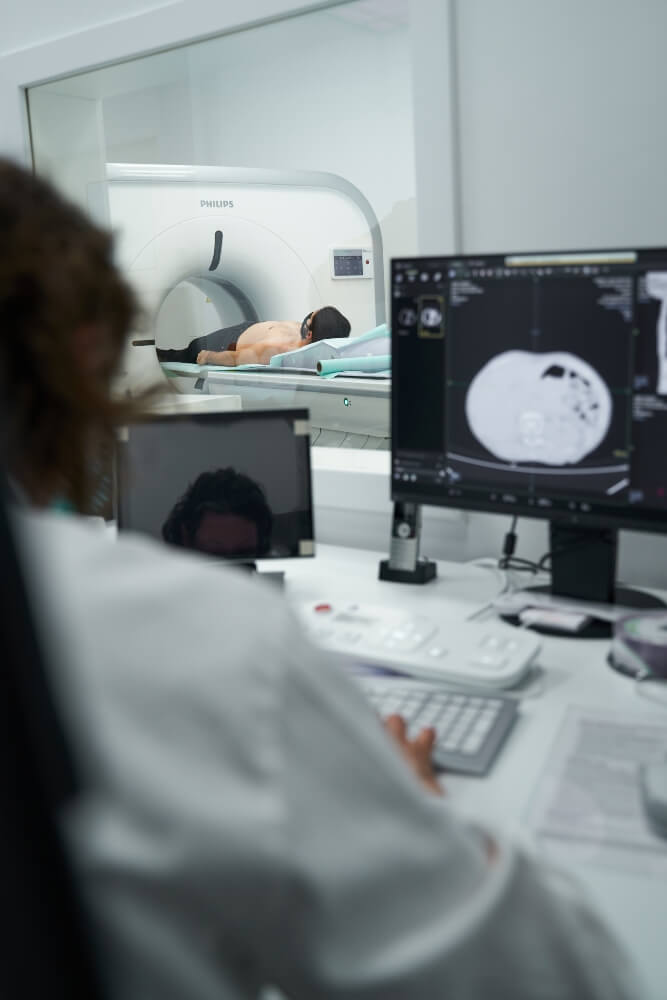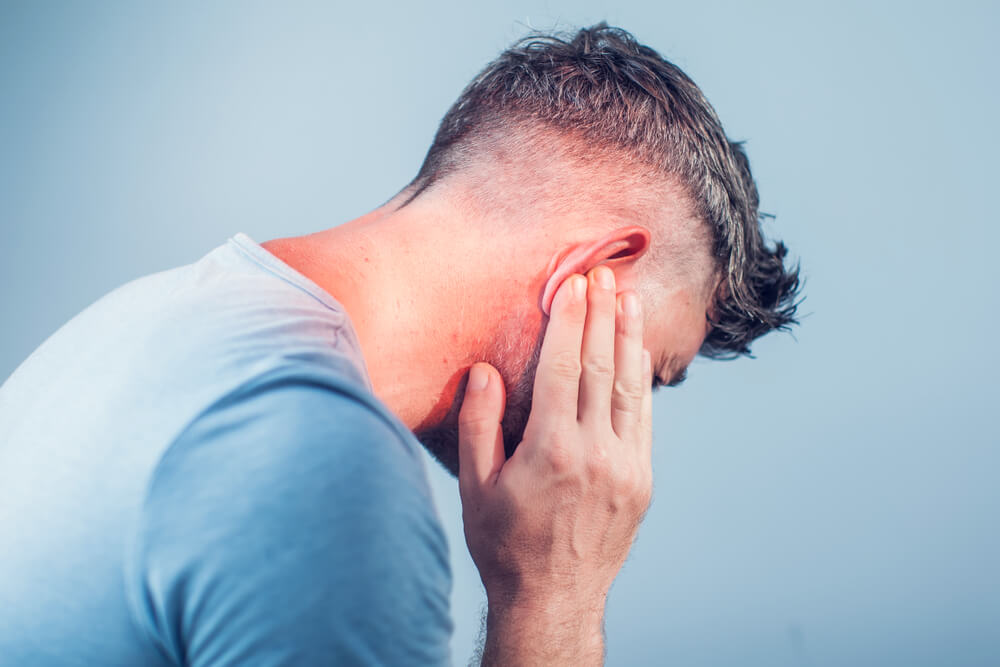Ringing in the ear (tinnitus) is not a disease in itself, but a sign that may indicate a disease, and therefore it is necessary to contact an otorhinolaryngologist who, based on the medical history, will decide which tests to refer the patient to in order to determine the cause.
The sensation of buzzing can occur only in one ear, in both or as buzzing in the head and, of course, only the person who has this problem hears it.
Why does tinnitus occur?
There are numerous reasons for ringing in the ear, we will try to look at the most common ones:

- Damage to auditory cells – this damage can be caused by noise or a bang in one moment, but it can also be caused by long-term exposure to noise (specific to certain professions), also certain medications have an adverse effect that implies an impact on hearing cells. In addition, age affects their condition, so ringing in the ears will occur more often in older people.
- Chronic otitis media – this disease involves inflammation of the mucous membrane of the middle ear that lasts for a long period of time and as a result, ringing in the ears may occur. However, there are usually other symptoms that will make us know that we should see a doctor. This type of otitis media is characterized by discharge, impaired hearing, sometimes pain and general discomfort in the ear.
- Meniere’s disease – this disease involves a disorder that affects the inner ear. Ringing in the head and ears is just one of the symptoms, hearing loss, pressure in the ear and dizziness also occur. Symptoms usually appear in the form of attacks that can last a few minutes or longer. At the time of the attack, the vertigo is as strong as the hearing loss, and afterwards the hearing returns, but not completely.
With this disease, there is a problem in the membranous part of the ear, where the pressure of the endolymph increases until Reisner’s membrane ruptures, after which the endolymph and perilymph mix.
- Benign tumor of the auditory nerve (acoustic neurina) – this type of tumor is one of the rarest tumors and progresses slowly. It is formed from vestibular nerve sheath cells. Patients will experience symptoms such as hearing loss and ringing in the ear, and as it progresses, numbness and paralysis of the jaw may occur.
- Eustachian tube disorder – The Eustachian tube is a cartilaginous-bony tube that connects the pharynx to the middle ear and must be kept open in order for everything to function properly. If it becomes blocked due to an infection, an ear infection occurs.
- Otosclerosis – is a disease of the inner ear that occurs due to the appearance of new cancellous bone on some parts of the bony shell of the inner ear. In many cases, it is a consequence of inheritance. It is specific for it that it includes both ears and that it develops gradually. In addition to ringing in the ears, there is also noise, and sometimes dizziness.
- Other chronic diseases, including problems with the cervical spine, neurological, nephrological, endocrinological and cardiac diseases, damage to blood vessels that occur in diabetics, can also affect the appearance of ringing in the head.
How is the cause of tinnitus diagnosed?

- Laboratory analyzes performed on the basis of a blood sample are the starting point for diagnosing all problems.
- CT of the head – CT of the head enables imaging of the facial bones, brain and meninges, imaging of the sinuses, eye sockets and facial bones, and of course the ear, which is why it is sometimes recommended when it is necessary to determine the cause of ringing in the ears.
A CT scan of the head will give reliable information if there are any changes in that part, so it is useful for detecting tumors.
CT is a painless, non-invasive diagnostic method with high reliability. The recording does not last long, during it you are exposed to X-rays, the amount of which is strictly taken into account. The risk of radiation will be minimal and significantly lower in relation to the benefit of this method, given that it provides information on which the further treatment of the patient depends.
No special preparation is needed for this analysis, unless contrast material will be used, then fresh urea and creatinine analyzes should be brought to see if there are any problems with the kidneys. Also, you should tell the doctor if you are allergic to iodine, because it is one of the ingredients of the contrast material.
After the scan, you can return to your routines immediately, and if you have received contrast material, you will be advised to drink more water to flush it out as quickly as possible.
The results of the head CT scan are available immediately.
In order to be sure that the recording will be done professionally, and the results will be read accurately and clearly explained, you should take care in choosing the doctor’s office where you will do the recording.
At Pulse Cardiology Center, we took special care when forming a team of radiologists, which is why today we are proud of every radiology specialist who works with us. You can be sure that they will be there for you and give you the best service, because that’s all you deserve. Radiology team of Pulse cardiology center: Dr. Slobodan Ćulafić, Dr. Branislav Lukač, Dr. Matija Miljević, Dr. Nikola Čolić, Dr. Borivoje Lukić, Dr Uroš Miladinović, Prim dr Miroslav Mišović and dr Igor Sekulić.
- MRI of the head – magnetic resonance is also a non-invasive and painless imaging method, which gives very precise images and can also be recommended to detect the cause of ringing in the head or ears. This imaging does not involve the use of X-rays and can be performed more often.
- Tympanometry – this is a painless (unless there is an ear infection) and safe method that takes a very short time. The goal of tympanometry is to find out if the middle ear cavity is empty or has secretions in it, if the Eustachian tube is working well and if there is a pathological movement of the chains of auditory ossicles.
Doctors use this method to diagnose and monitor diseases such as: ear inflammation accompanied by secretions, enlargement of the third tonsil, acute inflammation of the middle ear, but also to monitor allergic problems in the nasal cavity.
Tympanometry does not measure hearing, but it provides important information about the state of the hearing aid and is one of the objective methods.
- Audiometry – audiometry is a method for determining hearing impairment. Like the previous method, it is painless and safe, but it takes longer, about twenty minutes. In order for this method to be successfully implemented, the cooperation of the patient is needed, and that is why it is implemented among adults and children older than 5 years. During it, the patient participates actively, so it is a subjective diagnostic method.
People who have this problem must be wondering: How to stop ringing in the ears?
The answer is not simple and relates to everything previously said. Therefore, tinnitus is not a disease but a symptom and it is necessary to determine the cause, and in order to do it well, quickly and accurately, it is necessary to contact an otorhinolaryngology specialist or a neurologist who will plan the course of diagnosis and then treatment.
Sometimes the solution will be surgical intervention, sometimes treatment with drugs, it all depends on what problem is established in the patient.
Very often, people with tinnitus are prescribed drugs that improve blood circulation in the brain and inner ear.
In addition, sometimes it is necessary to work with psychologists so that the patient accepts buzzing as something normal and not a problem, because there are situations in which it is not so easy to remove it.
Music therapy belongs to the method of treating some problems, including tinnitus.
If you feel discomfort in your ears, you hear buzzing, you should not wait for it to pass, because it is unlikely that the problem will disappear on its own. It can occasionally repeat itself and stop, but in order to reduce the chance of it coming back again, you need to do the necessary analyses.
If you need analyzes in the field of radiology or neurology, Pulse Cardiology Center is the place where you can find the best service and experienced experts.





